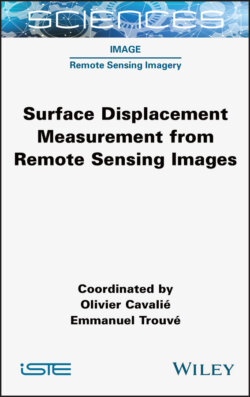Читать книгу Surface Displacement Measurement from Remote Sensing Images - Olivier Cavalie - Страница 19
1.2.3. Japanese L-band satellites: JERS-1, ALOS and ALOS-2
ОглавлениеThe Japanese Earth Resources Satellite (JERS-1) was the first of a series of Japanese SAR sensors working in the L-band, followed later by the Advanced Land Observing Satellite (ALOS) and ALOS-2. All three projects were conducted under governmental institutions. Launched in February 1992, JERS-1 lost its onboard recording capacity in August 1997, which limited its use over direct receiving ground stations, and the spacecraft finally terminated its mission in October 1998. The SAR sensor operated at 1.275 GHz (wavelength of 23.5 cm), with a bandwidth of 15 MHz. Only co-polarization in HH was implemented. The nominal swath was a stripmap mode of 75 km, at a fixed look angle of 35°. Tracks were acquired regularly, minimizing the time between two consecutive swaths, which was a great advantage for large mosaics and radiometric stability. Interferometry showed great coherence for vegetated areas compared to C-band radar, as in ERS, with comparable resolution. As an optical system (OPS) was also used, the satellite was put on a sun-synchronous orbit with a descending node at 10:30 to 11:00.
ALOS was the second Japanese satellite and was able to deliver L-band SAR images through its PALSAR instrument operating at a 1,270 MHz central frequency. The launch took place in January 2006, and the local hour was set at 10:30 descending node, with an onboard optical sensor (PRISM, AVNIR-2). The bandwidth was increased to 28 MHz in single-polarization HH or VV and 14 MHz in dual-polarization HH+HV VV+VH or quad polarization with different fine beams, with 70 km and 40 km swath, respectively. The ScanSAR mode only worked in co-polarization HH or VV, with a 350 km swath sub-divided into five beams. The spacecraft stopped operating in May 2011.
In April 2014, ALOS-2 followed the ALOS program with an L-band radar payload, without the optical part later put on ALOS-3. Compared to ALOS, the ALOS-2 PALSAR instrument improved the resolution (tunable between 14 and 84 MHz), the revisit cycle (14 days instead of 46 for ALOS) and right and left imaging capacities and provided new modes, such as spotlight and ScanSAR with burst synchronization for ScanSAR interferometry.
Data access: We can note that the background mission of these satellites was orchestrated by a basic operational scenario, i.e. a long-term homogeneous and consistent programming of the whole Earth in different modes, with regular updates. It is possible to freely access JERS-1 and ALOS data through the ESA EO portal at https://earth.esa.int/web/guest/-/jers-1-sar-level-1-single-look-complex-image and https://earth.esa.int/web/guest/-/alos-palsar-fbs-fbd-and-plr-products, respectively. The datasets contain all ESA acquisitions over the ADEN zone (Europe, Africa and the Middle East), plus some worldwide products received from JAXA.
